In English writing, there are a lot of different styles of writing. One style is the present perfect tense.
But what is the perfect aspect of the present perfect tense?
How do you use a relative pronoun, a question, or with adverbs with present perfect tense?
Here are all the tricks and tips you need to know about the present perfect tense in writing!
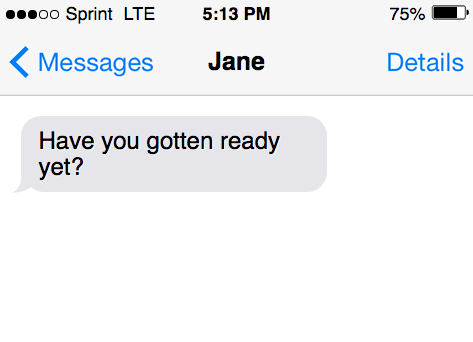
What is the present perfect tense?
The present perfect tense is a verb tense in English that one uses for past actions that apply to or continue into the present.
Typically, this tense is easy to recognize because sentences use an auxiliary verb (helper verb) like “have” or “has.”
The present perfect tense is one of the most commonly used main verb tenses in the English language.
Also, just because the phrase has the term “present” in it, that doesn’t mean it’s present tense.
In fact, the present perfect tense is frequently interchanged with the simple past tense, although there are still differences between the two tenses.
Essentially, this tense shows how an action that happened in the past simple tense is still directly related to the present.
What are the other tenses?
In English, there are three main verb tenses – Past tense, Present tense, and Future Tense.
Each of these tenses is further divided into four types:
- Simple
- Perfect
- Continuous
- Perfect Continuous
The table below explains each of these tenses with examples:
| Tense | Function | Rule | Example |
| Present simple | Helps to describe habits, facts, actions, and truth that are not affected by time | Ist form of verb + s/es | He loves pizza. |
| Past simple | Helps to describe events that have happened in the past | IInd form of the verb | She wore a beautiful dress for the party. |
| Future simple | Helps to describe events that will happen in the future | Will/ shall + Ist form | He will go to New York tomorrow. |
| Present perfect | Helps to describe the relevance of past events in the present moment | Has/ have + IIIrd form of the verb | I have learned to ride a bike. |
| Past perfect | Helps to describe events that happened prior to other events in the past | Had + IIIrd form of the verb | She had finished the paper before leaving the hall. |
| Future perfect | Helps to describe events that will be completed between now and a specific point in the future | Will/ have + IIIrd form of the verb | She will have finished the book by tomorrow. |
| Present continuous | Helps to describe ongoing actions | Is/ am/ are + Ist form + ing | “She is reading a book. |
| Past continuous | Helps to describe ongoing events of the past, mostly in relation to another event | Was/ were + Ist form + ing | He was driving to work when the accident happened. |
| Future continuous | Helps to describe future events that will/are expected to continue for a period of time | Will be + Ist form + ing | I will be going to meet my grandparents tomorrow. |
| Present perfect continuous | Helps to describe events that started in the past and will continue into the present | Has/ have been + Ist form + ing | She has been writing a book for the past one year. |
| Past perfect continuous | Helps to describe events that began, continued, and ended in the past | Had been + Ist form + ing | I had been working in this company for ten years when I got the promotion. |
| Future perfect continuous | Helps to describe events that began in the past but will continue until a point in the future | Will/ shall have been + Ist form + ing | I will have been doing business with her for one year. |
Present perfect vs. present tense
The simple present tense is used to describe situations where an action is currently happening.
For instance, “He feels great” isn’t talking about how the subject felt or will feel in the future.
Instead, the statement addresses how the subject, “he,” is feeling at this current moment in time.
Additionally, simple present can be used to describe a situation where an action happens regularly or unceasingly.
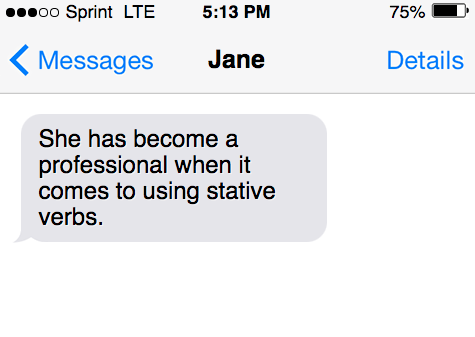
Take this sentence, for example:
“Colleen attends literature events every day.”
In this statement, the verb “attends” explains that the subject “Colleen” regularly goes to literature events.
In comparison, one uses present perfect to talk about things that happened at a specific time in the past but are still directly related to the present moment in time.
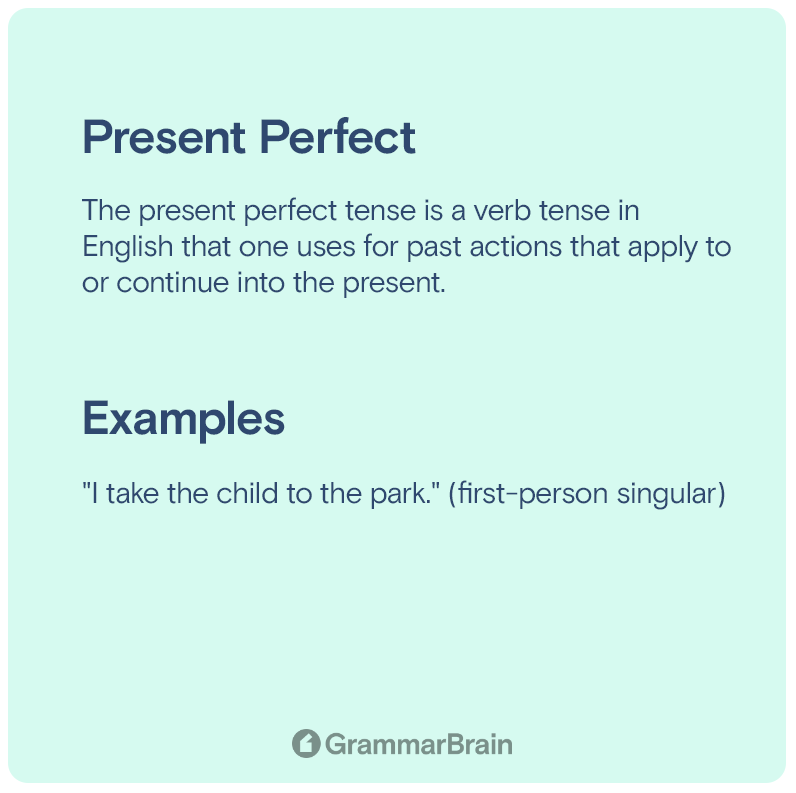
How to use simple present tense
Writing in the simple present is relatively simple, especially compared to other forms of sentences.
In the simple present, one typically uses the root form of a regular verb.
The only instance where one does not do this is in the third-person singular, which ends in “-s.”
Here are a few examples:
- “I take the child to the park.” (first-person singular)
- “He writes his book outside.” (third-person singular)
- “They go to the park across town.” (third-person plural)
One can also use the simple present to make an action word negative.
That said, negative sentences include terms like “don’t,” “doesn’t,” etc.
For instance, in the simple present, a negative statement can look like this:
“Max does not want to share the new car.”
In the previous example, the reader understands that Max isn’t willing to share the car at this present moment in time.
Lastly, one can use the simple present style to ask a question.
That said, the general formula for this circumstance is as follows:
- Do/does + [subject] + [a verb’s root form]
So, a question would look something like this:
“Does he know how to play basketball?”
Overall, the point or main objective of the simple present is to describe any situation that is happening in the current moment, not in the past and not to depict something that is about to happen.

How to use the present perfect tense
Recall, the present perfect tense uses auxiliary verbs “have” or “has” in addition to the past participle form of the main verb.
There are several ways to use this tense of writing.
That said, here are some present perfect tense examples.
Present perfect tense: questions
For questions written in the present perfect tense, the auxiliary verb comes first.
The structure of these questions is as follows:
[have/has] + [subject] + [past participle]
Here are some questions that use the present perfect tense:
- “Have you arrived yet?”
- “Has the event started yet?”
Present perfect tense: negatives
One can also write sentences in the present perfect tense in the negative.
Negative sentences simply add a negative term, like “not,” “never,” “nor,” etc.
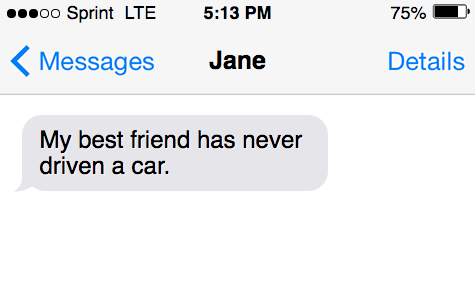
For the present perfect tense, a negative statement is formatted like this:
[have/has] + [negative] + [past participle]
Further, some negative present perfect tense examples include the following:
- “Josh has notslept well since he left school months ago.”
- “I have never seen the ocean in my entire life.”
Additionally, it is best to avoid using contractions when writing negative sentences in the present perfect tense.
For example, “I’ve not seen him in a week” sounds clunky and awkward compared to “I have not seen him in a week.”
Present perfect tense: with adverbs
Typically, an adverb is placed between the auxiliary verb and the past participle.
However, the grammar rules differ depending on the adverb in question, specifically “yet” and “just.”
Still, the general format looks like this:
[have/has] + [adverb] + [past participle]
Here are some examples using the present perfect tense with adverbs:
“He has steadily improved his grades from a C average to an A average.”
“Michael’s guests have already arrived at the party.”
The terms “yet” and “just” are time expressions and are often used with the present perfect tense.
Generally, “yet” is either used with negatives or in questions, and is placed at the end of the sentence.
Here are some examples:
- “Robert has not finished his homework yet.”
- “Have you discovered the meaning of the text yet?”
- Lastly, “just” is always placed between the verb and the past participle, like this:
- “I’ve just woken up from my nap.”
- “His package has just arrived at the house.”
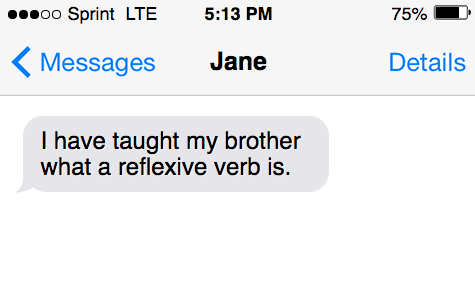
Present perfect tense: passive voice
Sometimes, perfect tenses must be written in the passive voice.
In this style of sentence, one uses the past tense form of “be,” which is “been.”
That said, the format for the present perfect tense in the passive voice is as follows:
[have/has] + [been] + [past participle]
Here are some example sentences:
- “Kayla has been given a prize at the carnival.”
- “You have been gifted with $1,000 cash for your outstanding work.”
Present perfect tense: statements
The present perfect form is easiest to understand when writing general statements.
Generally, these statements are usually constructed like this:
[have/has] + [past participle]
Here are some more examples that use the present perfect tense.
- “Liam has become the best friend I’ve ever had.”
- “We have experienced a period like this before, but this time, it feels different.”
What is a past participle?
A participle is a word that is derived from a verb and used for various purposes.
In the case of past participles, the words are used as adjectives as well as constructing perfect verb tenses.
To form a past participle, one takes the root verb form and converts it to the past tense.
For most action terms, this means adding “-ed” or “-d” to the end of the root, like when changing “jump” to “jumped.”
However, some action terms end in “-t,” like changing “burn” to “burnt.”
When a verb ends in “-y,” like “fry,” one replaces the “-y” for “-ied.”
For instance, “fry” changes to “fried.”
Irregular verbs are a little trickier, as the past participle form doesn’t look like the root.
For instance, “I am” changes to “I was” in the simple past form.
However, remember that action terms in the simple past style typically end in “-ed.”
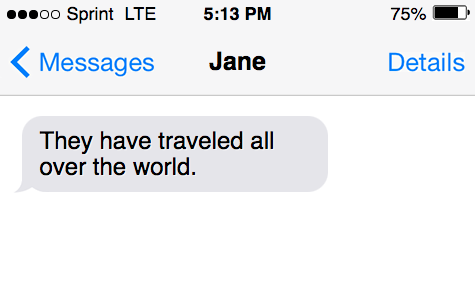
Passive vs. active voice
Active voice observes the subject performing an action.
For instance, “Scott chases his dog” observes the subject (Scott) performing the action (chase) on the target (dog).
To write this in the passive voice, one would take the target (dog) and move it to be the focus of the sentence.
Put simply, the subject is being acted upon by the verb.
“The dog was being chased by Scott,” is the statement written in passive voice.
Present perfect continuous tense
The present perfect continuous tense is used to show that an action happened in the past and is continuing at the current moment in time.
Typically, the format looks like this:
[has/have been] + [present participle]
With that, a present participle is an action word ending in “-ing.”
These terms can be used as an adjective or to form a verb tense.
For example, the verb “to laugh” changes to “laughing.”
Perfect forms in the continuous tense can look something like this:
“He has been working on this project for ten years.”
As you can see, the present consequences observe that the subject is still working on his project.
However, the statement also describes the time period in which the subject started the project (ten years ago).
The project is an uncompleted action, but the statement indicates the subject is still working on it.
If there was a completed action, the statement would look something like this:
“He worked on his project for five years.”
In the above example, the sentence means that the project is either done or that the subject is not currently working on it anymore.
Essentially, the statement indicates that the project is something of the recent past.
Also, the words “recently” and “lately” are frequently used with present perfect continuous sentences.
Typically, these terms are placed at the very beginning or end of the statement.
Examples of present continuous tense
- “Recently, I’ve been losing all my notes from class.”
- “Maya has been talking about moving lately.”
- “Chris has been studying mechanics for two weeks now.”
- “I have been intending to get in contact with her since last year.”
- “We have been discussing our options for months.”
How to know a sentence is present perfect
There are various ways one can use the present perfect tense in their writing, so let’s take a look at these circumstances.
An uncompleted action
The present perfect tense is most often used to describe an action that started in the recent past and its effects on the current moment in time.
“The group has talked about the book since 1990.”
The main verb, “talked,” shows that “the group” used to discuss the book and is currently discussing the same book.
In these examples, the present perfect tense shows that although something started in the past, it is still taking place today.
Repeated actions in the past
When the same action happens in the past and is likely to happen again, one can use the present perfect tense.
Take this statement, for example:
“He has seen the play three times.”
Notice the subtle (but noteworthy) difference between this statement:
“He saw the play three times.”
In the second instance, the reader assumes the subject isn’t likely to see the play again in the future.
A recently completed action
If an action happened not long ago, one can use the present perfect tense.
Even though the main verb tells the reader the activity happened in the past, it was so recent that it is still directly connected to the current moment in time.
Take this statement:
“Tommy has finished band practice now, so let’s go to his house.”
Change over time
The present perfect tense examples are also prevalent when describing a change that has happened over extended moments of time.
Consider this statement:
“My little brother has matured greatly since I last saw him three years ago.”
Uncoupled action that is to be finished
When an action started in the past and isn’t yet finished, one can use the present perfect tense.
Further, this style is used especially if the action is likely to be completed in the near future.
Oftentimes, these statements use the word “yet” to refer to the idea that the action will be done soon.
- “He hasn’t included enough words in his paper yet.”
- “The jury has not reached a verdict.”
Add significance to an action that was completed
Lastly, the present perfect tense can be used to add more emphasis on an event.
That said, this same tense is often used for significant achievements or accomplishments, in addition to rare events.
Essentially, if any major life experiences occur, the present perfect tense can be used to describe how awesome they are.
- “He has sold out all the events.”
- “I’ve met the person I will marry.”
- “They have finished the website before the deadline.”
When not to use the present perfect tense
Typically, the main difference between simple past and present perfect tense is the emphasis on whether or not the action happened.
Still, it is important to know that one should not use the present perfect tense with a specific time tacked onto the sentence.
For instance, this statement would be incorrect:
“I have gone grocery shopping on Wednesday.”
Instead, it should be written like this:
“I went grocery shopping on Wednesday.”
Of course, this can get a little confusing because you can use the present perfect tense to refer to a broad period.
However, when it is a specific time (a certain day, for instance) you cannot use present perfect form.
Still, statements like the following are correct:
“He has gone for a run every Friday this year.”
In the previous example, the unfinished period started in the past (a year ago) and still continues today.
The fact that the subject takes his run on every Friday doesn’t disqualify it from the present perfect tense.
More examples of present perfect
- “I have taught my brother what a reflexive verb is.”
- “You have reached the best point in your life.”
- “They have traveled all over the world.”
- “She has become a professional when it comes to using stative verbs.”
- “My best friend has never driven a car.”
- “Have you gotten ready yet?”
- “The team has steadily risen to the highest rank.”
- “I have lived in Kansas my entire life.”
- “We have watched the move a couple of times.”
- “My plant has grown so much since last week.”
Why is present perfect so challenging?
The present perfect tense is one of the most challenging English grammar verb tenses to learn.
That said, this tense is especially difficult to learn if someone grew up in Latin America or any other country because it does not always have a direct translation in other languages.
Therefore, learning how to talk or write in this style takes considerable practice, especially if one is not a native English speaker.
Sources
- What Is A Past Participle? Definitions & Examples – Thesaurus.com
- Simple Present Tense – How It’s Used, With Examples – Grammarly
- What Is the Present Perfect Tense? – Grammarly
- Present Perfect Continuous Tense – Grammarly
- Active vs. Passive Voice – Grammarly
- What Are Present Participles? (with Examples) – Grammar Monster
Inside this article
Fact checked:
Content is rigorously reviewed by a team of qualified and experienced fact checkers. Fact checkers review articles for factual accuracy, relevance, and timeliness. Learn more.
Core lessons
Glossary
- Abstract Noun
- Accusative Case
- Anecdote
- Antonym
- Active Sentence
- Adverb
- Adjective
- Allegory
- Alliteration
- Adjective Clause
- Adjective Phrase
- Ampersand
- Anastrophe
- Adverbial Clause
- Appositive Phrase
- Clause
- Compound Adjective
- Complex Sentence
- Compound Words
- Compound Predicate
- Common Noun
- Comparative Adjective
- Comparative and Superlative
- Compound Noun
- Compound Subject
- Compound Sentence
- Copular Verb
- Collective Noun
- Colloquialism
- Conciseness
- Consonance
- Conditional
- Concrete Noun
- Conjunction
- Conjugation
- Conditional Sentence
- Comma Splice
- Correlative Conjunction
- Coordinating Conjunction
- Coordinate Adjective
- Cumulative Adjective
- Dative Case
- Determiner
- Declarative Sentence
- Declarative Statement
- Direct Object Pronoun
- Direct Object
- Diction
- Diphthong
- Dangling Modifier
- Demonstrative Pronoun
- Demonstrative Adjective
- Direct Characterization
- Definite Article
- Doublespeak
- False Dilemma Fallacy
- Future Perfect Progressive
- Future Simple
- Future Perfect Continuous
- Future Perfect
- First Conditional
- Irregular Adjective
- Irregular Verb
- Imperative Sentence
- Indefinite Article
- Intransitive Verb
- Introductory Phrase
- Indefinite Pronoun
- Indirect Characterization
- Interrogative Sentence
- Intensive Pronoun
- Inanimate Object
- Indefinite Tense
- Infinitive Phrase
- Interjection
- Intensifier
- Infinitive
- Indicative Mood
- Participle
- Parallelism
- Prepositional Phrase
- Past Simple Tense
- Past Continuous Tense
- Past Perfect Tense
- Past Progressive Tense
- Present Simple Tense
- Present Perfect Tense
- Personal Pronoun
- Personification
- Persuasive Writing
- Parallel Structure
- Phrasal Verb
- Predicate Adjective
- Predicate Nominative
- Phonetic Language
- Plural Noun
- Punctuation
- Punctuation Marks
- Preposition
- Preposition of Place
- Parts of Speech
- Possessive Adjective
- Possessive Determiner
- Possessive Case
- Possessive Noun
- Proper Adjective
- Proper Noun
- Present Participle
- Prefix
- Predicate



